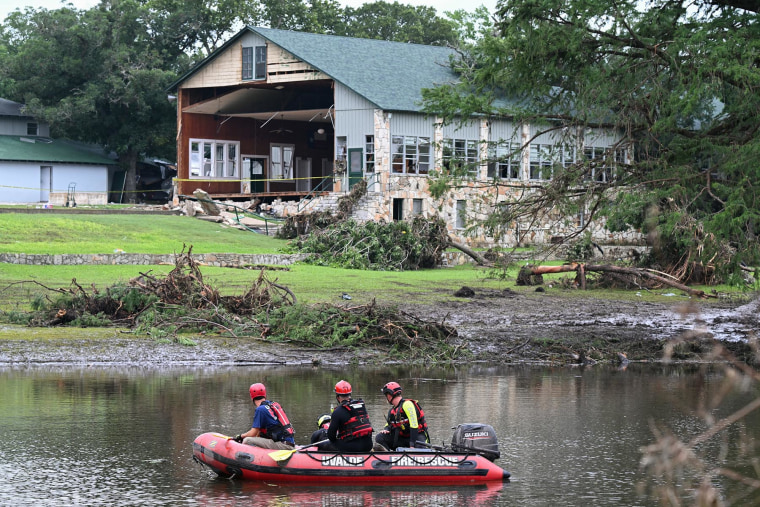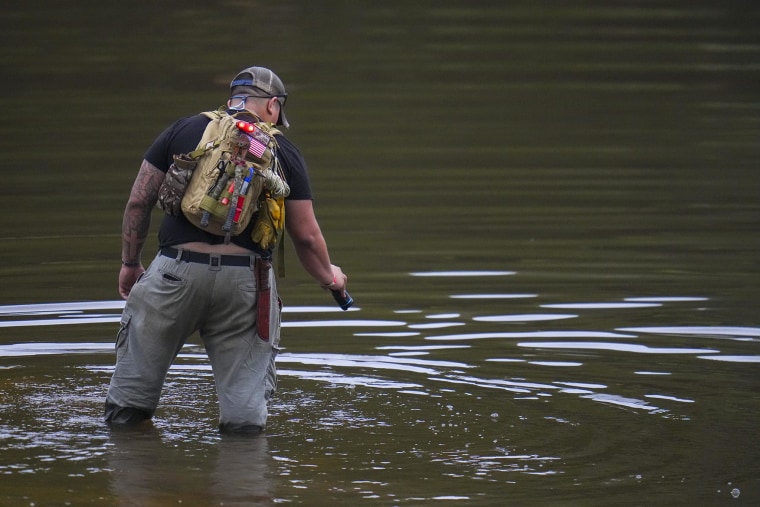More than 100 people have been killed after heavy rain brought dangerous flash flooding to central Texas' Hill Country region.
Days after Friday's deadly deluge, first responders continue their search for victims along the Guadalupe River near Kerrville. The river surged by more than 20 feet within 90 minutes Friday, washing out roads and creating widespread damage.

Here's what we know about the flooding so far.
Areas affected
The flooding primarily affected the south-central Texas region, commonly referred to as the Hill Country. Counties that were severely affected include Kerr, Travis, Burnet, Kendall, Tom Green and Williamson.
The catastrophic flooding struck Friday with a surge of 20 to 26 feet on the Guadalupe River near Kerrville. President Donald Trump signed a major disaster declaration for Kerr County, which is west of Austin.

Cellphone video verified by NBC News also showed what appeared to be a so-called flood wave rolling along the Guadalupe River in Center Point, a town about 8 miles southeast of hard-hit Kerrville.
“No one knew there would be a 30-foot high tsunami of water,” Gov. Greg Abbott said Tuesday, addressing questions about state and local preparations for the floods.
Eyewitness accounts of flash flooding along the river are consistent with a flood wave. Survivor Christian Fell described "a huge wall of water that was pushing me backwards" when he opened a door in his home Friday.
Another survivor, Hallie Thompson, said roaring water from the Guadalupe not far from the tragic events unfolding at Camp Mystic, a summer camp for girls, ripped her home in half as the water level came up to the second floor and then receded just as rapidly.
"The front of it is gone," she said.
Victims
At least 111 people have been killed across six counties.
The majority, 87, were killed in Kerr County, officials said — 57 adults and 30 children. In addition, seven deaths have been reported in both Travis and Kendall counties, five in Burnet County, three in Williamson County, and one in Tom Green County.
Camp Mystic, a 99-year-old Christian summer camp in Kerr County, announced on Monday that it was "grieving the loss of 27 campers and counselors."
Abbott said at a news conference Tuesday afternoon that five camp attendees and a counselor remain missing. A child not associated with the camp was also missing, he said.
They are among the 173 people confirmed missing in the region, he said.

The response
Abbott declared a disaster in the following counties across the region: Bexar, Burnet, Caldwell, Guadalupe, Travis, Williamson, Bandera, Coke, Comal, Concho, Gillespie, Kendall, Kerr, Kimble, Llano, Mason, McCulloch, Menard, Reeves, San Saba and Tom Green.
Trump declared a major disaster for the state Sunday, which Abbott had done the previous day.

